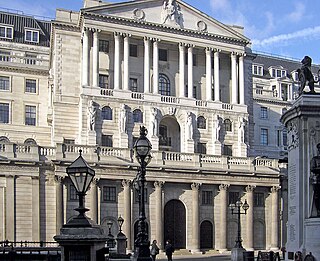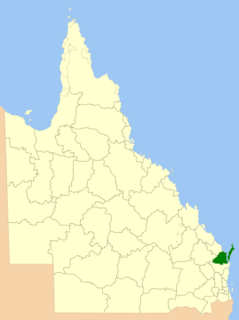
169 Mary Street is a heritage-listed warehouse at 169 Mary Street, Brisbane CBD, City of Brisbane, Queensland, Australia. It was designed by Richard Gailey and built from 1887 to 1888 by T Game. It is also known as Coal Board Building. It was added to the Queensland Heritage Register on 21 October 1992.

Royal Hotel is a heritage-listed hotel on the corner of Kent Street and Bazaar Street, Maryborough, Fraser Coast Region, Queensland, Australia. It was designed by Eaton & Bates and built from 1892 to 1930s. It was added to the Queensland Heritage Register on 21 October 1992.

Australian Joint Stock Bank Building is a heritage-listed former bank and now commercial building at 331 Kent Street, Maryborough, Fraser Coast Region, Queensland, Australia. It was designed by Francis Drummond Greville Stanley and built in 1882 by French & Crystall. It is also known as Department of Primary Industries Building, Union Bank, and the Office of Sport and Recreation. It was added to the Queensland Heritage Register on 21 October 1992.

The Maryborough Customs House is a heritage-listed former customs house at Richmond Street, Maryborough, Fraser Coast Region, Queensland, Australia. It was designed by John Smith Murdoch and built in 1899. It was added to the Queensland Heritage Register on 7 February 2005.

Oonooraba is a heritage-listed villa at 50 Pallas Street, Maryborough, Fraser Coast Region, Queensland, Australia. It was built from c. 1892 onwards. It was added to the Queensland Heritage Register on 21 October 1992.

Gataker's Warehouse Complex is a heritage-listed warehouse at 106-108 Wharf Street & 310 Kent Street, Maryborough, Fraser Coast Region, Queensland, Australia. It was designed by James Buchanan and built in 1879 by F Kinne and Jack Ferguson. It is also known as Graham and Gataker, Netterfield and Palmer, Rutledge and Netterfield, and Gatakers Warehouse. It was added to the Queensland Heritage Register on 21 October 1992.
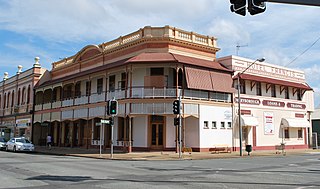
Hotel Francis is a heritage-listed former hotel at 310 Kent Street, Maryborough, Fraser Coast Region, Queensland, Australia. It was built in 1878. It is also known as Metropolitan Hotel (1878-1935). It was added to the Queensland Heritage Register on 21 October 1992.

Government Bond Store is a heritage-listed bond store at Wharf Street, Maryborough, Fraser Coast Region, Queensland, Australia. It was designed by Charles Tiffin and built from 1864 to 1883 by William Hope. It was added to the Queensland Heritage Register on 7 February 2005.

Maryborough City Hall is a heritage-listed town hall at 388 Kent Street, Maryborough, Fraser Coast Region, Queensland, Australia. It was designed by Hall & Dods and built from 1906 to 1908 by Crystall & Armstrong. It is also known as Maryborough Town Hall. It was added to the Queensland Heritage Register on 21 October 1992.

Maryborough Heritage Centre is a heritage-listed former bank building at 164 Richmond Street, Maryborough, Fraser Coast Region, Queensland, Australia. It was designed by George Allen Mansfield and James Cowlishaw and built in 1877 for the Bank of New South Wales. It is also known as National Parks and Wildlife Service Headquarters, Post Master General's Department, and Telecom Building. It was added to the Queensland Heritage Register on 21 October 1992.

Maryborough School of Arts is a heritage-listed school of arts at 427 Kent Street, Maryborough, Fraser Coast Region, Queensland, Australia. It was designed by John Harry Grainger and built from 1887 to 1888 by Jacob & John Rooney. It is also known as Museum and Technical College and Recreation Club. It was added to the Queensland Heritage Register on 21 October 1992.

Queensland National Bank is a heritage-listed former bank building at 327 Kent Street, Maryborough, Fraser Coast Region, Queensland, Australia. It was designed by Frederic Herbert Faircloth and built from 1914 to 1915 by James Treevan and N C Steffensen. It is also known as Burrum Shire Council Chambers and Woodstock House. It was added to the Queensland Heritage Register on 21 October 1992.

St Paul's Anglican Church is a heritage-listed church at 178-202 Adelaide Street, Maryborough, Fraser Coast Region, Queensland, Australia. It was designed by Francis Drummond Greville Stanley and built from 1878 to 1921. It was added to the Queensland Heritage Register on 21 October 1992.

Queensland National Bank is a heritage-listed former bank building at 50 Churchill Street, Childers, Bundaberg Region, Queensland, Australia. It was designed by Philip Oliver Ellard Hawkes and built in 1919. It is also known as Childers Travel World, Wrench & Cobb, and Ye Olde Boutique. It was added to the Queensland Heritage Register on 21 October 1992.

Mount Morgan Masonic Temple is a heritage-listed masonic temple at 2 Gordon Street, Mount Morgan, Rockhampton Region, Queensland, Australia. It was designed by Eaton & Bates and built in 1903 by Newman Brothers. It was added to the Queensland Heritage Register on 21 October 1992.
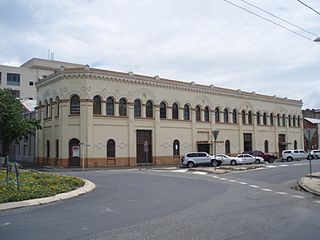
GS Curtis Stores is a heritage-listed warehouse at Bolsover Street, Rockhampton City, Rockhampton, Rockhampton Region, Queensland, Australia. It was designed by John William Wilson and built from 1882 to 1883 by P Waters & Sons. It is also known as AMV Warehouse. It was added to the Queensland Heritage Register on 21 October 1992.
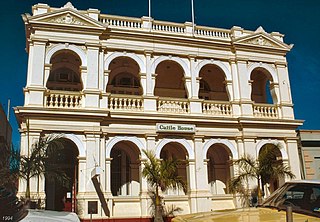
Cattle House is a heritage-listed former bank building at 180 Quay Street, Rockhampton, Rockhampton Region, Queensland, Australia. It was designed by Addison & Corrie and built from 1903 to 1904. It is also known as Union Bank of Australia and the Cattleman's Union building. It was added to the Queensland Heritage Register on 21 October 1992.

The Queensland National Bank Building is a heritage-listed former bank building at 186 Quay Street, Rockhampton, Rockhampton Region, Queensland, Australia. It was designed by Francis Drummond Greville Stanley and built in 1880 by Collins & Mclean. It is also known as R Rees and Sydney Jones Building. It was added to the Queensland Heritage Register on 21 October 1992.
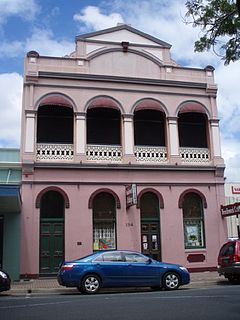
The Royal Bank of Queensland Building is a heritage-listed former bank building at 194 Quay Street, Rockhampton, Rockhampton Region, Queensland, Australia. It was built in 1888. It is also known as Diamonds & Pearls, Rivers Restaurant, and Winchcombe Carson. It was added to the Queensland Heritage Register on 21 October 1992.

Inverell Shire Council Building is a heritage-listed former bank and council chambers and now retail premises at 56 Byron Street, Inverell, Inverell Shire, New South Wales, Australia. It was added to the New South Wales State Heritage Register on 2 April 1999.

